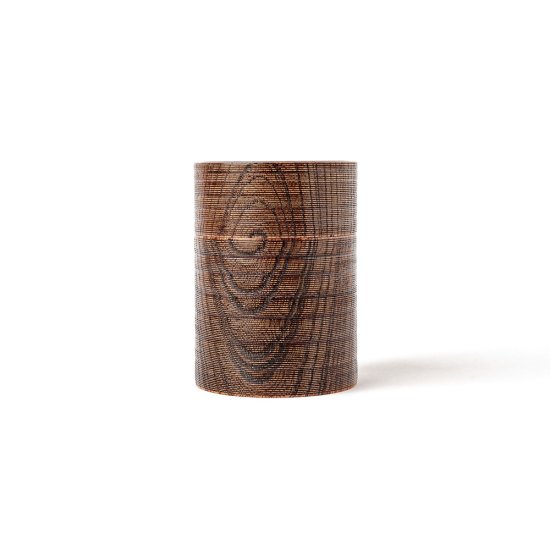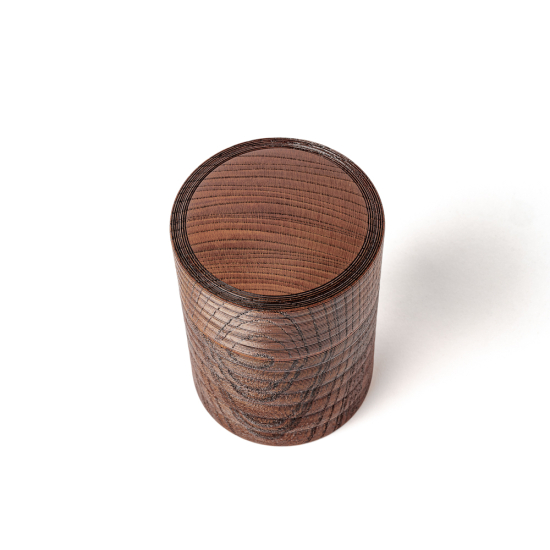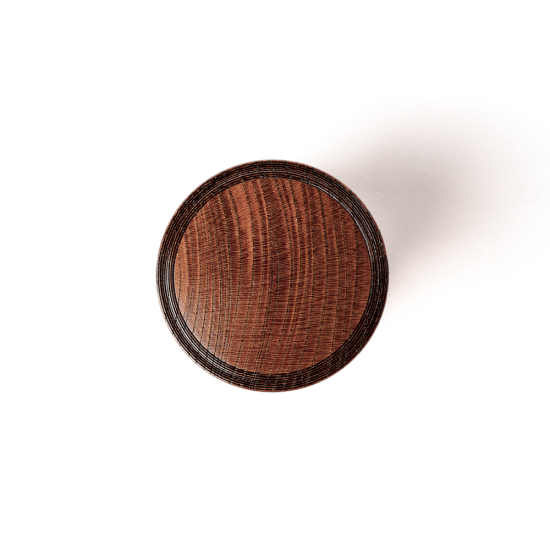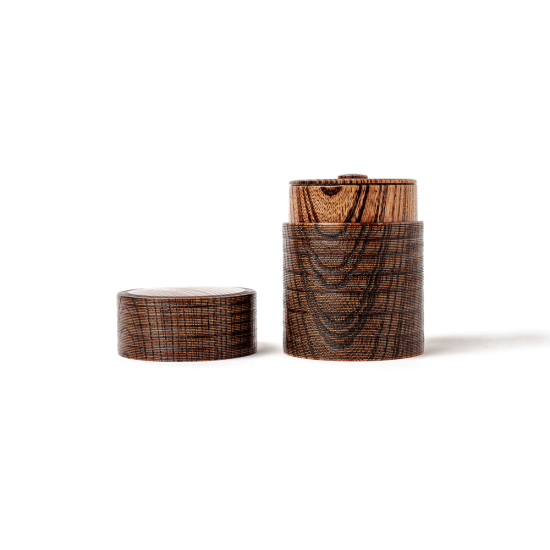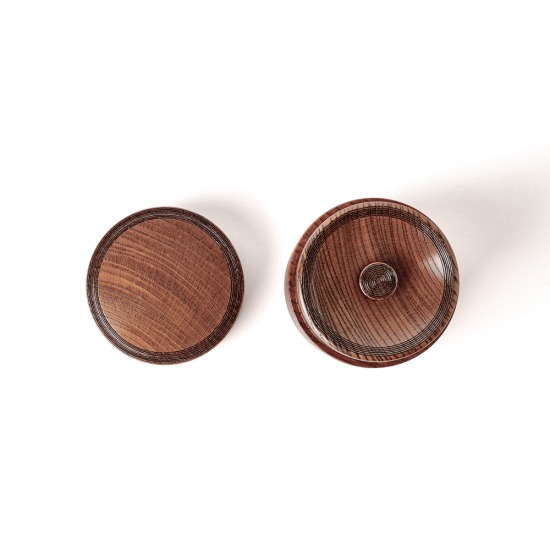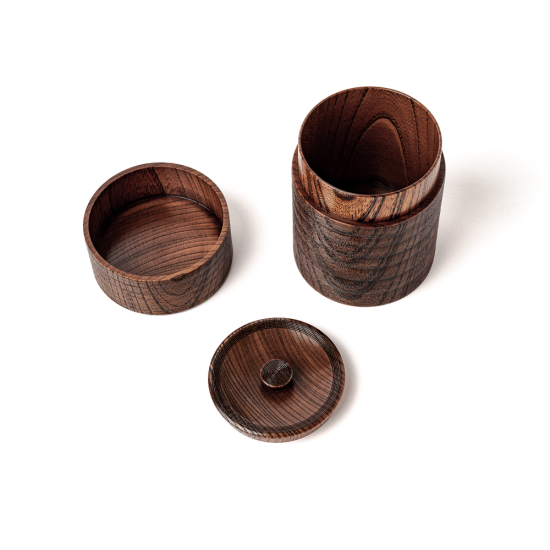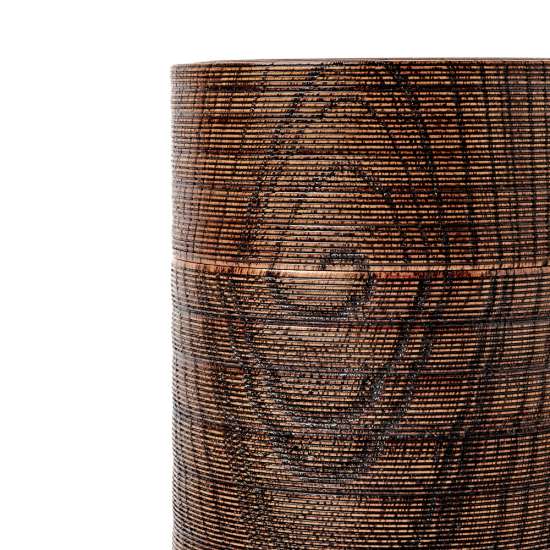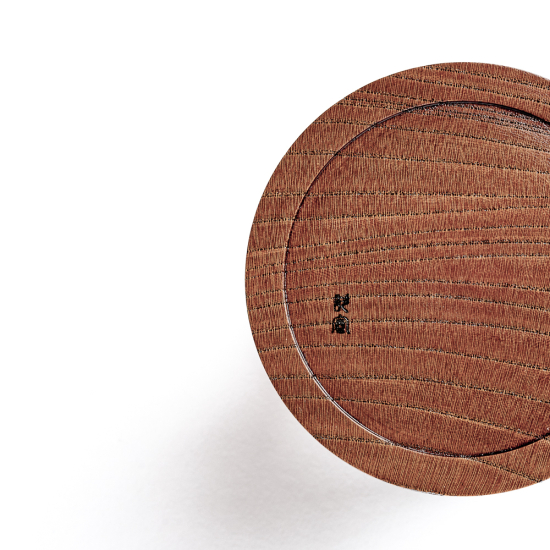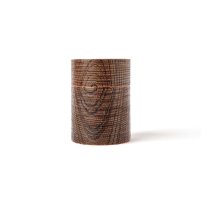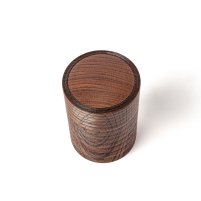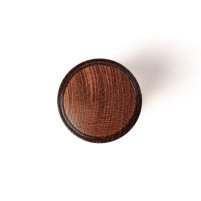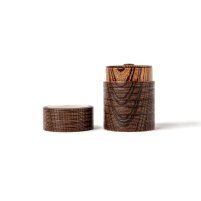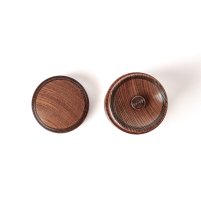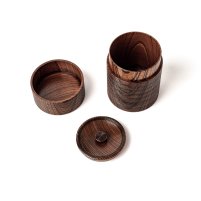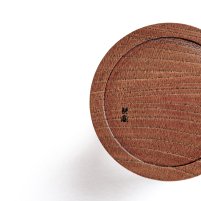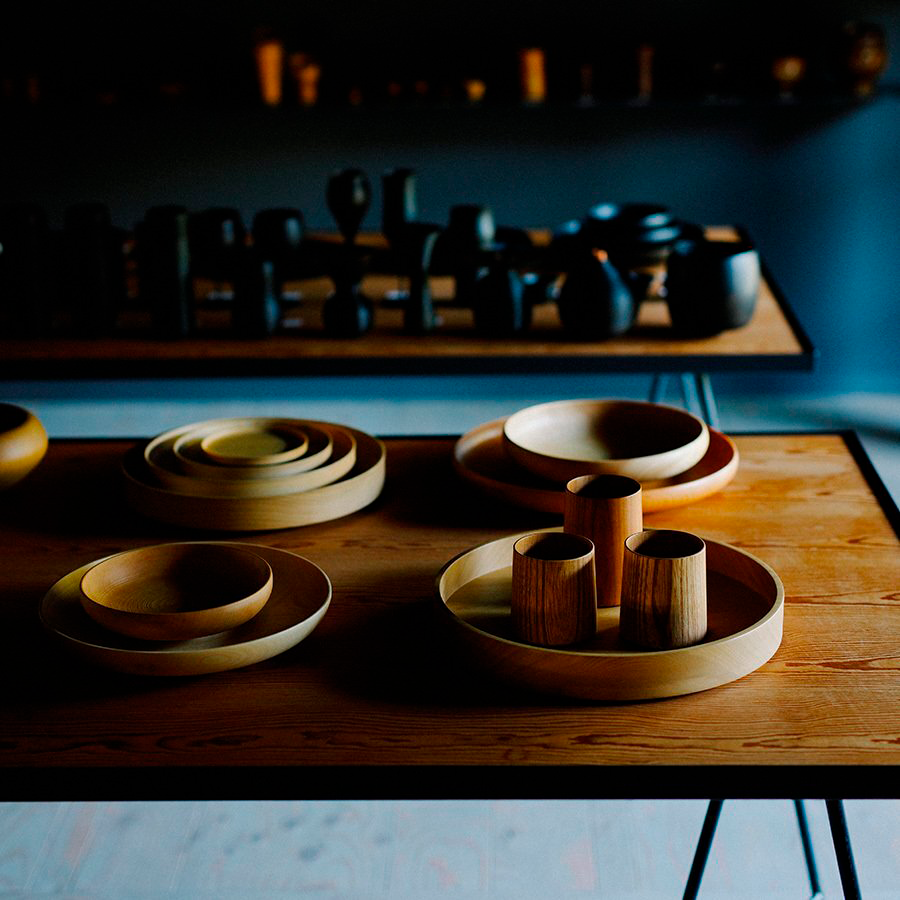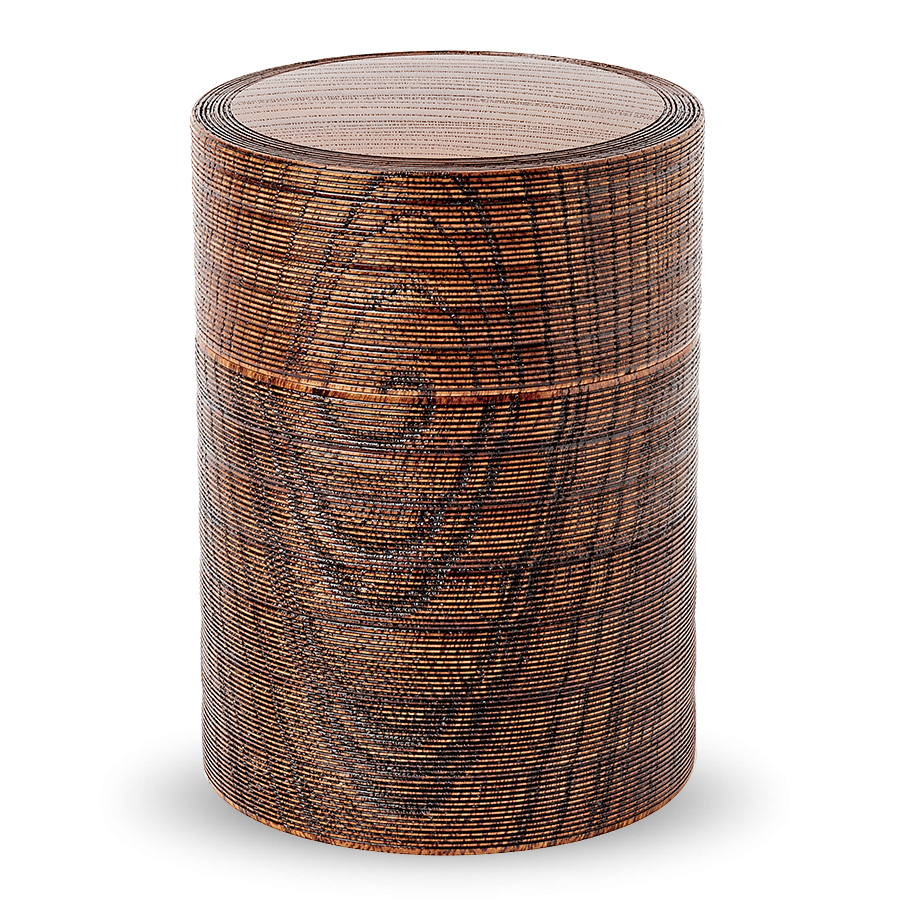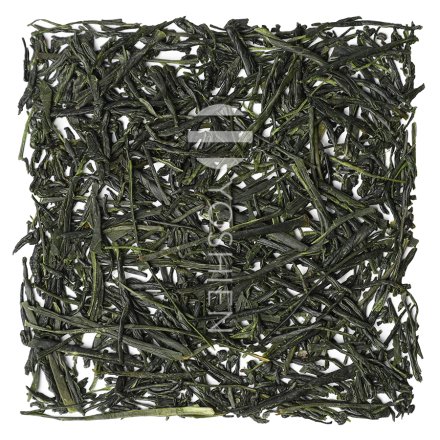Traditional Japanese lacquer or Urushi is the purified sap of the Asian lacquer tree, which has been used for thousands of years in Japan to coat objects from crockery to furniture and buildings. When dry, lacquer is both heat and water resistant, therefore providing protection and strength to underlying materials, very often wood, but also bamboo, paper and leather. Lacquerware itself can be referred to as Urushi as well as Shikki (漆器 lit. “urushi vessel”), and with the development of acrylic resin in the last century, objects coated in synthetic lacquers, such as food-safe polyurethane, are considered Urushi/Shikki too. Pure natural Urushi is transparent, while the black and red lacquers most associated with Shikki are achieved with the addition of mineral pigments, over which traditional decorative details such as Maki-e (蒔絵) “sprinkled pictures” or Raden (螺鈿) “shell inlay” can be applied.
Japanese zelkova or Keyaki (欅) is a particularly strong and valuable wood that was historically used to make bows for samurai. Its density and beautiful grain make it perfect for the production of high quality Urushi wares, and in the case of Chazutsu, it offers excellent aroma protection and climate control for the loose tea stored inside. Before it can be used, the wood is stored for several years until it has sufficiently dried out to ensure that the final product does not warp. Once dried it is ready to be cut and turned into Kiji, which is then coated in multiple layers of lacquer.



